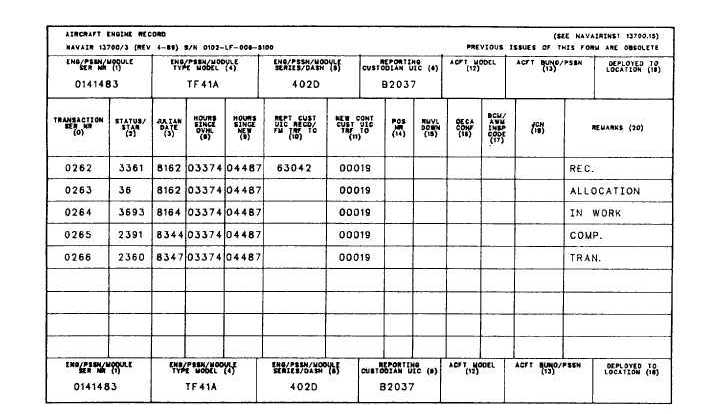recorded on the Aircraft Engine Record card. An engine card is shown in figure 7-7.
For the most part, the card is self-explanatory. The blocks are numbered to correspond to items of information reported on ETRs.
An understanding of data elements and ETRs will clarify the entries made on the Aircraft Engine Record card.
Engine Transaction Report (ETR)
An ETR is used to advise the controlling custodian of actions concerning the use or status code changes of assigned engines. An ETR is normally submitted once each workday covering all transactions occurring since the previous report. Reports will be submitted not later than 2400 hours of the first working day following the date the action occurred. Should it become necessary to submit a late report, use the actual Julian date of action and indicate in the Remarks section that the report is late. Some situations that require the submission of an ETR are as follows:
The installation of a serviceable, uninstalled engine
The removal of an engine and retention as a serviceable uninstalled engine
The removal of an engine as an unserviceable engine
The receipt and transfer of both installed and uninstalled engines
The striking of an engine from the Navy inventory
There are numerous other situations that require an ETR; however, those listed above are used most often.
The preparation of an ETR is a relatively simple (but important) task. NAVAIRINST 13700.15, as well as instructions issued by the controlling custodians, contain guidelines and examples that cover almost all anticipated engine transactions. These instructions also provide detailed information on status code and STAR code applications and required data elements. Refer to the matrices listed in figures 7-8 and 7-9 for more information on required data elements for specific status/STAR code combinations.

Figure 7-7. - Aircraft Engine Record card.
Continue Reading